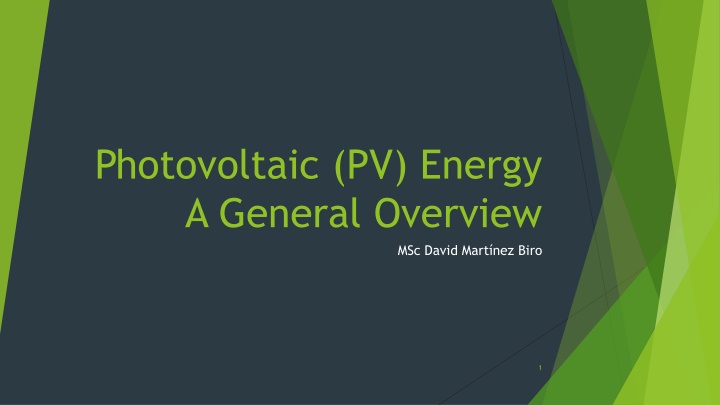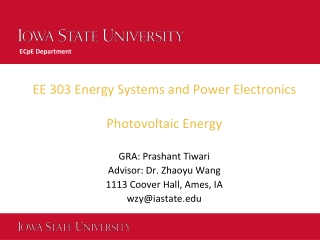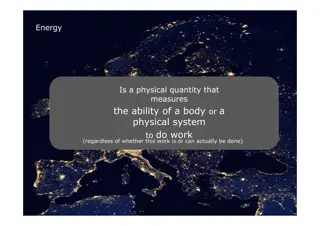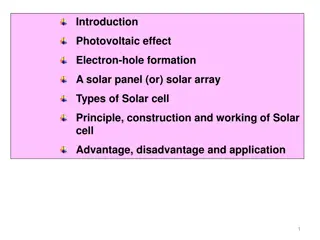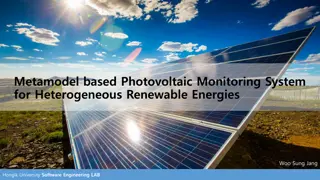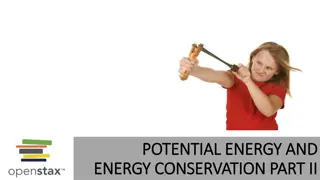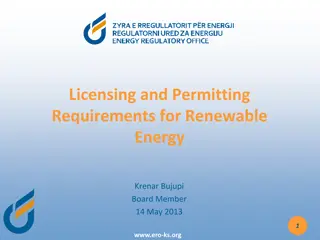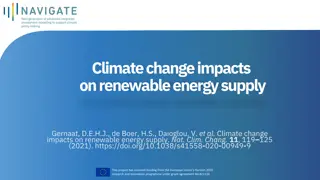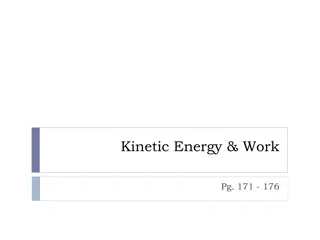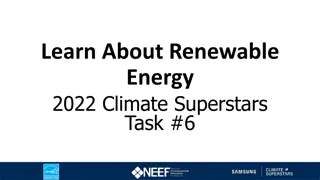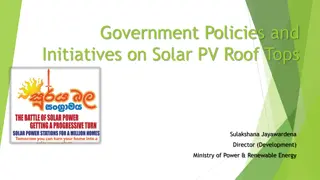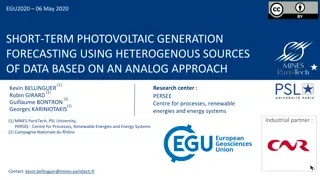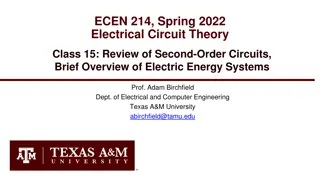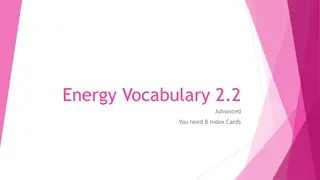Photovoltaic Energy Overview: How PV Systems Work and Their Advantages
Understanding photovoltaic energy and its workings, including the advantages and drawbacks of PV systems. Explore developed and emerging technologies, efficiency progress, energy payback time, and market tendencies in the PV industry. Dive into topics like PV system types, variable production challenges, and technological advancements such as thin-film and crystalline silicon technologies. Discover the potential of third-generation emerging technologies like dye-sensitized, quantum dots, and perovskite. Learn about the efficiencies progress and energy payback time considerations in PV systems. Stay informed about market tendencies and global cumulative PV installations by region, along with annual growth rates of renewable energy capacity.
Download Presentation

Please find below an Image/Link to download the presentation.
The content on the website is provided AS IS for your information and personal use only. It may not be sold, licensed, or shared on other websites without obtaining consent from the author.If you encounter any issues during the download, it is possible that the publisher has removed the file from their server.
You are allowed to download the files provided on this website for personal or commercial use, subject to the condition that they are used lawfully. All files are the property of their respective owners.
The content on the website is provided AS IS for your information and personal use only. It may not be sold, licensed, or shared on other websites without obtaining consent from the author.
E N D
Presentation Transcript
Photovoltaic (PV) Energy A General Overview MSc David Mart nez Biro 1
Content How does PV energy work? PV Systems Advantages and Drawbacks Developed and Emerging Technologies Efficiency Progress Energy Pay Back Time Market Tendencies 2
How does it work? Photovoltaic Effect (1) 3
Advantages Available almost anywhere Electric energy direct conversion Low (almost negligible) maintenance No mechanical moving parts Silent (+ in urban areas) Coincides with cooling needs Government financial incentives (3) Easy rooftop/ground installation Predictable production 5
Drawbacks Variable production (day/night and seasonal) Less reliable PV systems require DC to AC inverters Large area Low efficiency compared to other energy production systems 6
Developed Technologies Second generation First generation: Thin Film ~ 10% market share Crystalline Silicon ~ 90% market share 7 (4)
Emerging Technologies (Third Generation) Dye-Sensitized Quantum dots Perovskite Organic (5) 8
Efficiencies Progress (6) 9
Energy Payback Time (7) PV systems have a 25 years lifespan 10
Market Tendencies PV module production by region (8) 11
Annual Growth Rates of Renewable Energy Capacity 13 (9)
Jobs in Renewables (9) 15
References 1. http://energyeducation.ca/encyclopedia/Photovoltaic_effect 2. http://www.hinren.com/solar-energy-solutions/solar-pv-solutions/grid- interactive-srtpv-system/ 3. http://www.crses.sun.ac.za/technologies-solar 4. http://www.borgenergy.com/monocrystalline-solar-panel/ 6. Solar Cell Efficiency Progress, 2016 7. https://www.researchgate.net/figure/275364910_fig9_Fig-9-Energy-payback-time- for-seven-PV-modules-P-1-represents-the-TiO-2-perovskite 8. PSG AG, 2016 9. http://www.ren21.net/wp-content/uploads/2016/06/GSR_2016_Full_Report.pdf 10. GTM Research, SEIA, 2016 17
